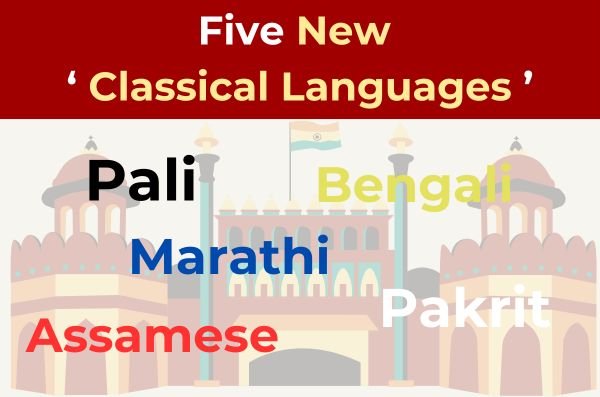
Indian cabinet added five more languages into the list of ‘Classical Languages’ and these languages are Marathi, Bengali, Pali, Pakrit and Assamese.
Earlier, there were 6 languages which had the status of ‘Classical Languages’, and these languages were Sanskrit, Kannada, Telugu, Odia, Malayalam and Tamil.
Tamil was the first Language to get the recognize as a classical language in 2004 and Odia was the last to receive that status in 2014. Now the number has increased from six to eleven languages. Following are the ‘Classical Languages’ :
Assamese
Bengali
Kannada
Malayalam
Marathi
Odia
Pali
Pakrit
Sanskrit
Telugu
Tamil
What is the criteria to get the status of ‘Classical Language’?
It is based on criteria established by a Linguistic Experts Committee. According to committee following benchmarks to be met by the Language :
Ancient Literature:
A body of ancient literature or texts, valued as cultural heritage by generations of speakers, must exist.
High Antiquity:
Early texts and recorded history must span over 1000 years.
Knowledge Texts:
In addition to poetry, the language must have corpus of prose, including knowledge texts, epigraphical and inscriptional evidence.
Distinct Evolution:
The classical language and its literature can be distinct from its modern form, or it may have evolved into newer forms, with possible discontinuity from its original structure.
What are the Benefits of Having that Status?
The Ministry of Education set up three Central Universities for promoting Sanskrit.
Central Institute of Classical Tamil to facilitate the translation of ancient Tamil texts, promotion of research and offering courses for university students and Tamil language scholars.
The Centres for excellence for studies in classical Kannada, Telugu, Malayalam and Odia were also established under the Central Institute of Indian Languages in Mysuru.
According to sources, several national and international awards have been instituted to recognize and encourage achievements in classical languages.
The new languages will also have national awards, chairs in universities and centres for promotion.
This will create significant employment opportunities, not only in research but also for the preservation, documentation and digitisation of their ancient texts.
